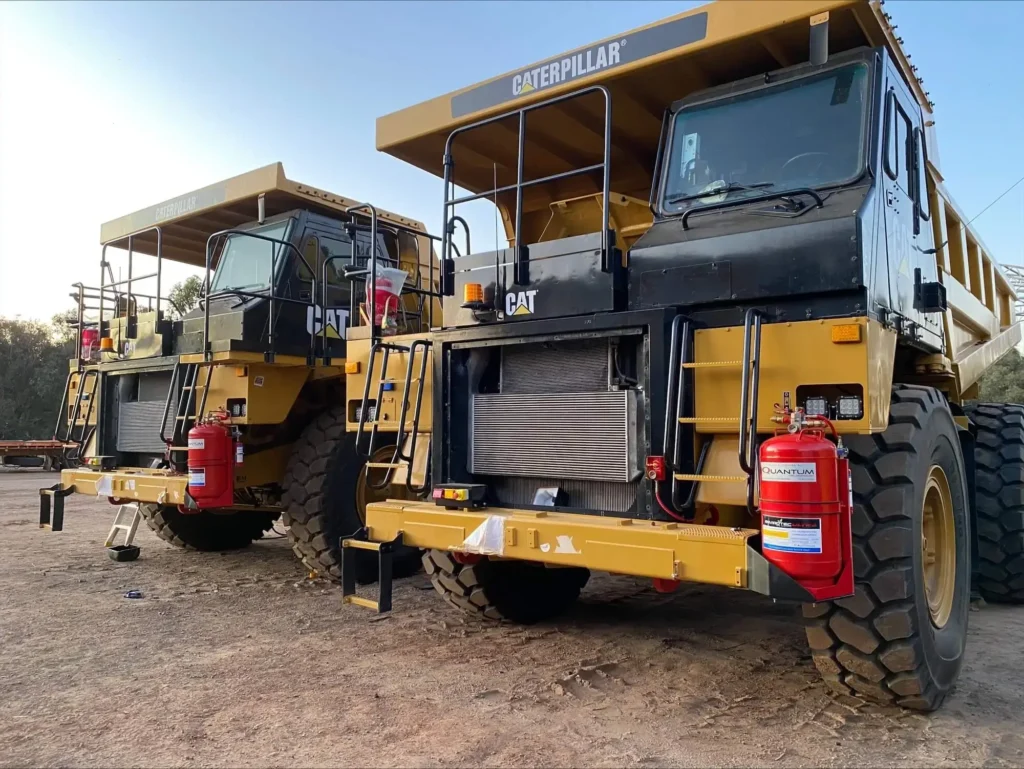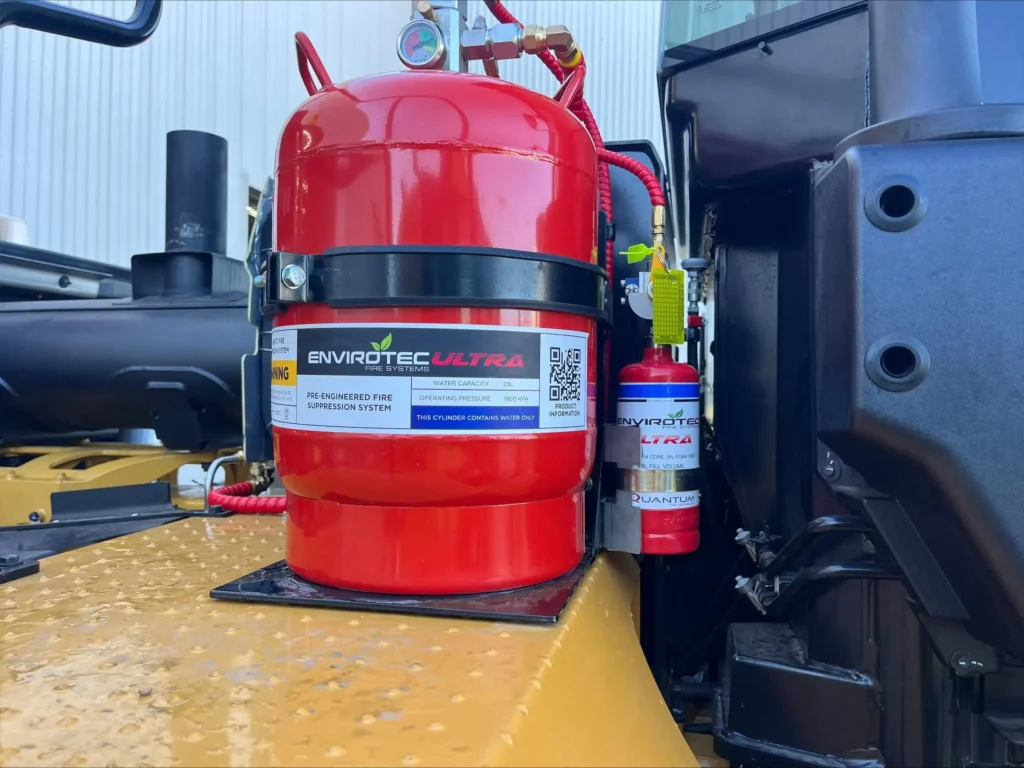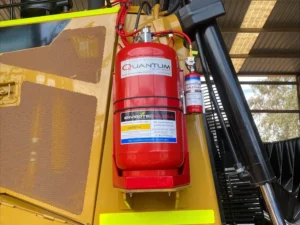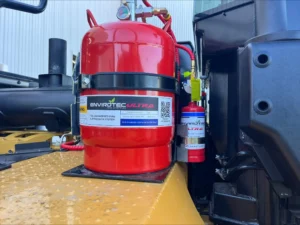Fire safety managers in mining, construction, transport and forestry have a new priority: fluorine-free firefighting foam. For decades, aqueous film-forming foams (AFFFs) that contain PFAS chemicals were the industry standard. Yet mounting evidence shows these “forever chemicals” persist in soil and water, accumulate in human tissue and carry serious health risks. As regulators move to phase out PFAS foams, businesses need an effective, compliant alternative that still delivers rapid knock-down of high-heat fires.
This article explores why fluorine-free foam (often called F3 foam) is now the benchmark for responsible fire suppression, how it performs compared with legacy formulas, and where Envirotec’s technology fits into the sustainability conversation.

Why the Industry Is Shifting Away from PFAS Foam
PFAS (per- and polyfluoroalkyl substances) were once prized for their ability to spread quickly across burning fuel. Unfortunately, their chemical stability means they do not break down in the environment. Scientific studies have linked prolonged PFAS exposure to thyroid disease, developmental issues and certain cancers.
Governments are responding. In Australia, most states now restrict or outright ban PFAS foams for non-aviation use. For example, the NSW EPA Regulation on PFAS Firefighting Foams states that businesses must transition to safer alternatives except in tightly controlled circumstances. Internationally, the EU has proposed a sweeping PFAS ban, and the US EPA is tightening limits on PFAS in drinking water.
The writing is on the wall: companies that continue using fluorinated foams face rising liability and compliance costs.
How Fluorine-Free Foam Works
At first glance, removing fluorinated surfactants might seem to weaken a foam’s ability to smother a hydrocarbon fire. Modern F3 formulations, however, use specialised hydrocarbons, silicones and sugars to achieve similar film-forming and cooling effects without persistent toxins. Key performance characteristics include:
| Performance Metric | F3 Foam | Legacy AFFF |
|---|---|---|
| Environmental persistence | Biodegradable | Very high |
| Toxicity | Non-hazardous | PFAS-related health risks |
| Knock-down time | Comparable, often < 30 seconds | < 30 seconds |
| Re-ignition resistance | High when mixed correctly | High |
Independent tests conducted under AS 5062-2022 confirm that certified F3 foams match or exceed the extinguishing efficiency of older AFFFs on Class A (solid fuel) and Class B (flammable liquid) fires, critical for heavy equipment where diesel, hydraulic fluid and debris can all ignite.
How Fluorine-Free Foam Works
a) Lower Lifecycle Costs
PFAS foam concentrates can no longer be disposed of cheaply. Environmental regulations may require controlled incineration or specialist waste treatment, costly obligations owners must cover every time they flush or service a system. Fluorine-free foams eliminate this bill and reduce overall disposal risk.
b) Better Corporate ESG Scores
Investors and procurement teams now scrutinise Environmental, Social and Governance (ESG) metrics. Switching to a non-hazardous agent demonstrates proactive environmental stewardship and worker health protection—an advantage when bidding on major projects or public contracts.
c) Simplified Maintenance
F3 foams are compatible with the latest foam-induction technology used in systems such as the Envirotec Ultra vehicle fire suppression system. Because the foam and water remain separate until discharge, there is no premix degradation in the cylinder, extending refill intervals up to five years and reducing plant downtime.

Real-World Applications
-
Underground mining fleets – Diesel loaders and personnel carriers run hot and are difficult to evacuate. A fluorine-free foam system gives operators a rapid knock-down agent without introducing toxic residue into mine water.
-
Public transport depots – Bus engines operate in densely populated areas; fluoride-free foam aligns with passengers’ rising expectations for green transport solutions.
-
Forestry harvesters – Equipment often works far from municipal water and in sensitive ecosystems. Using biodegradable foam prevents contamination of waterways and wildlife habitats.
Implementation Tips
-
Audit existing systems: Identify vehicles or fixed plants still using AFFF concentrates and map a transition timeline before local bans bite.
-
Choose certified products: Ensure the foam and hardware meet AS 5062-2022 and relevant performance listings (e.g., Global-Mark or CSIRO ActivFire).
-
Train in-house teams: Maintenance staff must understand new foam-induction ratios, daily pressure checks and annual hydrostatic testing to keep certification valid.
-
Document disposal: If replacing legacy foam, follow your state’s hazardous-waste chain-of-custody rules.
Adopting fluorine-free firefighting foam is no longer just an eco-initiative, it is a strategic imperative. With impending global PFAS restrictions and mounting disposal costs, early movers will save money and mitigate legal exposure. Envirotec’s F3 foam solutions combine proven fire-knock-down performance with class-leading environmental credentials, giving site managers peace of mind that they are protecting both assets and the planet.
Ready to future-proof your fire suppression strategy?
Contact Envirotec Group for a tailored assessment and discover how F3 foam can integrate seamlessly into your heavy-equipment fleet or fixed-plant protection regime.










